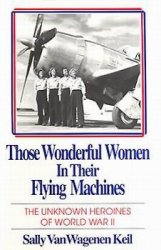Diego, California, in early 1965 to provide scheduled roundtrip passenger and cargo services to Las Vegas.
Employing a Beech 18, the company inaugurates revenue flights on March 10; these continue until the company goes out of business in 1971.
BANKAIR COMMUTER AIRLINES: 2406 Edmond Road, West Colombia, South Carolina 29170, United States; Phone (803) 8228832; Fax (803) 822-8775; Code B7; Year Founded 1973. Bankair is established by the Dickerson family at Columbia Municipal Airport in 1973 to offer scheduled passenger and cargo flights within South Carolina. Employing a fleet of 5 Piper PA-28 Cherokees, 2 PA-34 Senecas and 1 Cessna 402, the third-level company initiates services to Greenville, Hilton Head Island, Charleston, and Myrtle Beach. Extended frequencies are also available to Winston-Salem, North Carolina.
Operations continue throughout the remainder of the decade and new markets are entered at Charlotte and Lumberton. The fleet in 1981 is not significantly changed from that of 1973. Nettie D. Dickerson remains president, with Charles W. Dickerson as vice president-operations and John E. Dickerson as vice president-sales.
The company expands further in 1982-1984; new services are opened to Anderson, Beaufort, Bennetsville, Cheraw, Clemson, Dillon, Florence, Spartanburg, Pickens, Rock Hill, Sumter, Atlanta, and Birmingham. Several Rockwell Aero Commander 690s are acquired.
Two more Cessna 402s and another Seneca are added. With passenger traffic declining throughout 1985, the company abandons passenger service in 1986, electing to concentrate on cargo, express, and mail.
Just after takeoff from Hilliard, Florida, on June 24, 1987, an Aero Commander 690 with two passengers rolls and dives from an altitude of 9,200 ft.; upon impact, both aboard are killed and the aircraft is destroyed.
Charles Dickerson assumes the presidency in 1988, by which time his fleet has been significantly increased by the acquisition of 4 Aero Commanders 500s, 1 Cessna 402, 3 Cessna 404 Titans, 3 Mitsubishi Mu-2s, and 1 Seneca.
On a return service from Atlanta to Little Rock via Memphis on May 17, an Aero Commander 690A crashes 4 mi. W of its destination in the Arkansas River, killing its pilot.
In 1989, flight equipment is altered again; gone are a Seneca, the Titans, the C-402s, although two more Mu-2s are purchased.
Operations continue apace during the next three years. Enplanements in 1991 are 400 and that figure increases to 500 in 1992. During those two years, 15.2 and 16 million pounds of cargo, respectively, are flown.
The fleet in 1993-1994 comprises 3 Learjets, 8 Mu-2s, 7 C402/404s, and 3 Senecas. The workforce stands at 100.
Services continue in 1995-2000; during the latter year, President Dickerson’s fleet includes 12 Mu-2s, 10 Learjets, 7 Cessna 402s, 5 Piper Senecas, and 1 Cherokee Six.
BANNERT AIR, GmbH.: Wagramerstrasse 56, Vienna 1220, Austria; Phone 43 (1) 203 5589; Fax 43 (1) 203 5589 26; Http://www. bannert. com; Year Founded 1995. Chief pilot Rene Popp establishes Bannert at Vienna Airport in 1995 to offer executive and small group passenger connections between the larger European airports and smaller communities, as well as to worldwide destinations. Flights begin and continue with 1 each Cessna 650 Citation III, C-501 Citation, C-550 Citation II, and Piper PA-31-350 Navajo Chieftain.
BAR HARBOR AIRLINES: United States (1946-1991). Thomas and Joseph Caruso establish Bar Harbor as an FBO at Ellsworth, Maine, in 1946. Although providing charter flights for over 15 years, the company does not establish an airline division nor begin to offer scheduled service until 1968. Daily scheduled Cessna 310 and Cessna 402 roundtrips are initiated to Bangor, Boston, Portland, and other New England destinations. These continue on a low-key basis for the remainder of the decade and into the early 1970s.
By 1975, enplanements for the small regional have grown to 47,343. The fleet now includes 5 Beech 99s, 2 Cessna 402s, and 1 Cessna 310.
Airline employment in 1976 grows 30.8% to 85. A Beech 99 freighter crashes near Bar Harbor on August 16; although the aircraft must be written off, the pilot escapes injury.
Two more Beech 99s are purchased and employed to increase frequencies and, in November, to inaugurate nonstop service from Boston to Quebec City.
Passenger boardings jump 34.6% to 72,389 while freight skyrockets 72.1% to 176,642.
Two more Beech 99s are purchased in 1977. Enplanements total 93,955. Four persons die in the crash of a Beech 99 in rain and fog near Trenton, Maine, on May 17, 1978. Passenger boardings jump 15.7% for the year to 111,453 while freight increases 63.6% to 381,093 pounds.
The workforce is increased by 88.4% in 1979 to 243. Customer bookings increase by 52.2% to 169,715 as the fleet is increased by 3 Convair CV-600s.
Bar Harbor’s fleet in 1980 includes 12 Beech 99s, 1 Cessna 402, 1 Cessna 310, and 4 Convair CV-600s, 1 of the latter being received during the year. These aircraft fly into a growing list of markets in Maine, New Hampshire, Connecticut, Massachusetts, and New York, including Presque Isle, Waterville, Bangor, Bar Harbor, Rockland, Augusta, Portland, Manchester, Hartford, Springfield, Worcester, and Albany.
The service between Manchester and New York (LGA) is a replacement service for Delta Air Lines. Meanwhile, the route from Presque Isle in Maine to Quebec City is suspended. In May, Rockland, Maine-based Downeast Airlines is purchased and merged. Passenger boardings rise 38.3% to 234,591 and result in orders being placed for 3 CASA C-212 Aviocars.
The 320-employee large regional opens a new Boston-New York (JFK) route and adds one CV-600 and two CASA C-212 Aviocars during the first half of 1981. President Joseph Caruso and his executive vice president, Allyn J. Caruso now possess a fleet comprising 5 Convair CV-600s, 11 Beech 99s, 2 CASAs, and 1 Cessna 402. Flights are initiated to the Maine towns of Lewiston and Auburn in October, replacing those earlier provided by the failed Air New England.
The carrier also signs a System-One reservations, marketing, and service agreement with Eastern Air Lines, which will make Bar Harbor basically a commuter affiliate complete with aircraft in modified EAL livery.
As a result of the PATCO air traffic controllers’ strike and subsequent ATC difficulties, enplanements are off 3.8% to 225,666.
The workforce in 1982 totals 326. The new marketing/service arrangement with Eastern Air Lines comes into effect on January 1 and the commuter begins to feed its passengers, as Eastern Express, to the major’s hubs at Boston and New York. The final Aviocar joins the fleet and Eastern Express service spreads to Florida.
Enplanements jump 19.7% to 270,059, while cargo drops 8.2% to 704,000 pounds.
Beginning in 1983, supplemental cargo charters are undertaken for Federal Express. Passenger boardings grow only a slight 0.2% to 269,618.
Additional Aviocars are acquired in 1984 allowing the privately held New England regional to resume upward growth. Twice-daily roundtrip service is inaugurated on June 1 from Bar Harbor to Philadelphia via Portland.
Passenger bookings swell with a 10.5% to 297,876.
The payroll is increased by 5% in 1985 to 379 and the fleet includes 10 Beech 1900s, 11 Beech 99s, and 5 CV-600s. Orders remain outstanding for 4 SAAB SF340s.
Tragedy strikes on August 25 when Flight 1808, a Beech 99 with two crew and six passengers, crashes on approach in a thunderstorm to Maine’s Auburn-Lewiston Municipal Airport after a service from Boston; all are killed, including young peace advocate-actress Samantha Smith and her father.
Customer bookings for the year increase 20.4% to 357,714.
Fifty-nine employees or 15.6% of the workforce is laid off in 1986. The fleet now includes 16 Beech 99s, 11 Beech 1900s, and 6 SF340As; the CV-600s are withdrawn and sold. Valley Airlines is purchased in early spring and operated as a subsidiary.
When the first SAAB enters service in July, the company introduces a new Eastern Express aircraft livery. Late in the year, 10 Beech 99s are purchased and dedicated to Eastern Express operations in the Sunshine State.
Passenger boardings climb another 26.3%, to 453,105.
In February 1987, the Texas Air Corporation (TAC) acquires financially troubled PEOPLExpress and its subsidiaries. At the same time, TAC, acting through Continental Airlines, takes over Bar Harbor. Given the potential benefit to Eastern Air Lines of the new acquisition’s Miami operations, that major contributes to the arrangement and ownership is established at 59% Continental and 41% Eastern.
A significant percentage of Bar Harbor’s income is now “prorated” to the two majors to a point where they will have to provide monthly operational loans and the large regional will never again make a profit.
In April, Bar Harbor is assigned to take over management responsibilities and many of the routes of the one-time People subsidiary Provincetown-Boston Airline (PBA), which is designated a Continental Express carrier. Bar Harbor’s own northern network is expanded and PBA’s Florida division (Naples Airlines) is closed in favor of Bar Harbor’s Eastern Express service in the Sunshine State. PBA’s services to Cape Cod and the Massachusetts islands are also taken over and Bar Harbor’s annual customer bookings increase to 784,220.
Enplanements in 1988 total 1,042,288 as the fleet is expanded by the addition of Avions de Transport Regional ATR42-300s and Beech 1900s. A Philadelphia hub is opened on December 15, where the carrier replaces Britt Airways as the Eastern Air Lines commuter partner.
The 1,030-employee large regional continues to operate as both a Continental Express and Eastern Express service provider in 1989, hub-bing on three cities. Under both monikers, Bar Harbor flies 7 Beech 99s and 6 SAAB 340As to 11 small markets surrounding Miami. Up north, the airline serves strictly as Continental Express. From Boston’s Logan Airport and New York (LGA), Bar Harbor flies to 7 cities with 7 Beech 99s and 1 Beech 1900.
By far, the company’s largest hub is Newark, from whence it operates to 23 communities with 9 Beech 1900s and 16 ATR42-300s. In March following the shutdown and bankruptcy of Eastern Air Lines by strike, Bar Harbor also declares Chapter XI bankruptcy. In the two years since its takeover by TAC, it has received $43 million in loans from its two parents: $25 million from Eastern Air Lines and $18 million from Continental Airlines.
The figures are almost opposite the ownership percentages. Continental Airlines now takes over the funding of Bar Harbor completely and orders its Florida operations to be cut substantially. Passenger boardings increase by 5% to 1,097,145.
The fleet is altered in 1990 to include 8 ATR42-300s, 6 SAAB 340As, 16 Beech 1900s, and 15 Beech 99s. By May, when Continental Airlines decides to eliminate Bar Harbor’s Florida operation completely, the major has loaned the large regional $40 million since the latter’s bankruptcy the previous March. Negotiations to sell the Miami-based portion of the carrier to private investors fail and it is shut down in July.
The same private investors continue to seek an arrangement to purchase the carrier’s northern Continental Express remainder. Talks continue throughout the year, appearing several times on the verge of success, each time to fade. Meanwhile, as part of these proceedings, Bar Harbor’s ownership is acquired by Eastern Air Lines as a TAC stratagem to make its sale easier. Despite this change of ownership late in the year, the carrier continues to operate in the red. Customer bookings decline 2.2% to 1,072,843.
Eastern Air Lines and Bar Harbor Airlines cease operations on January 19, 1991. Both will soon be liquidated.




 World History
World History









